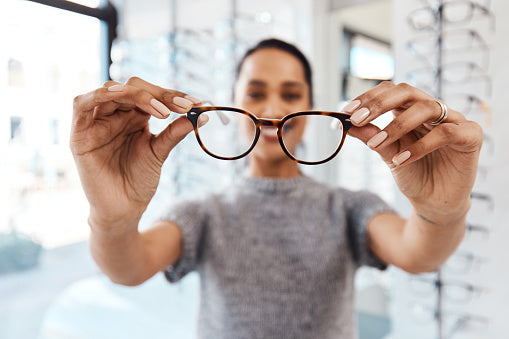Reading glasses and prescription glasses may seem similar at first glance, but they are actually quite different.
The Differences Between Reading Glasses and Prescription Glasses
Reading glasses, also known as "over-the-counter" (OTC) glasses, are designed for people with presbyopia, a condition that affects the ability to focus on objects that are close up. Presbyopia typically develops around age 40 and becomes more pronounced as we age. People with presbyopia will often find it difficult to read small print or work on close-up tasks, such as threading a needle or working on a computer. Reading glasses are available in a wide variety of strengths, also known as diopters, and can be purchased without a prescription at drugstores, supermarkets, and online retailers.

On the other hand, prescription glasses are tailored to the specific vision needs of an individual and are prescribed by an optometrist or ophthalmologist. Prescription glasses can correct various types of vision problems, such as nearsightedness (myopia), farsightedness (hyperopia), and astigmatism. Prescription glasses can also be used to correct presbyopia, but often in a multifocal or progressive lens form.
Another key difference between reading glasses and prescription glasses is that reading glasses are not tailored to an individual's specific facial measurements, whereas prescription glasses are. This can result in reading glasses not fitting properly and being uncomfortable to wear for long periods of time. Prescription glasses, on the other hand, are custom-made to fit an individual's face and provide a more comfortable fit.
When it comes to cost, reading glasses are generally less expensive than prescription glasses. This is because reading glasses are mass-produced, whereas prescription glasses are custom-made. Additionally, reading glasses do not require the same level of precision and expertise to create as prescription glasses do.
In conclusion, reading glasses and prescription glasses may seem similar at first, but they are designed to address different vision needs. Reading glasses are designed for people with presbyopia and can be purchased without a prescription. Prescription glasses, on the other hand, are tailored to an individual's specific vision needs and are prescribed by an optometrist or ophthalmologist. Additionally, prescription glasses are custom-made to fit an individual's face, providing a more comfortable fit than reading glasses.










